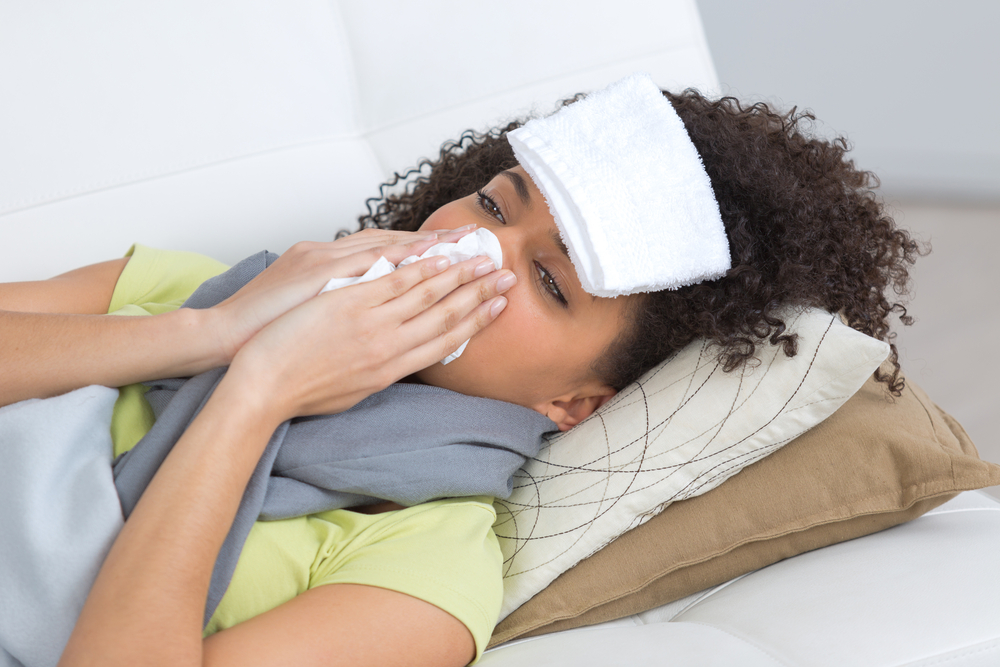This is the worst flu season in 15 years. Here’s why.
Last updated on

What Makes This Flu Season Different?
It’s not just the numbers that make this flu season stand out — it’s how quickly and intensely the virus has spread. In fact, this year’s flu season arrived earlier than usual, catching many off guard. Typically, flu seasons peak in late winter or early spring, but this time, the cases spiked much sooner. As of late December, flu-related hospitalizations were already reaching levels usually seen later in the season. Across the country, hospitals are reporting high flu-related admissions, with some regions facing significant strain on healthcare resources due to the sudden and widespread surge in cases. The pace and scale of the spread have been so rapid that many experts are comparing this season to some of the most severe flu seasons in recent memory. What’s even more concerning is that this flu season isn’t just affecting the usual high-risk groups, like the elderly and those with preexisting conditions. It’s hitting young, healthy adults and even children particularly hard. Influenza-related hospitalizations for children, in particular, have been much higher than expected, and some areas are seeing increased cases of flu complications like pneumonia. Flu strains that have emerged this season, particularly H3N2, have proven to be more aggressive and capable of causing severe symptoms across a broader range of age groups. This aggressive spread is leading to a rise in severe flu cases, and some hospitals are even reporting shortages in both beds and staff to cope with the wave of flu patients. Moreover, this season’s intensity is tied to factors beyond just the flu itself. For the past few years, pandemic-related precautions like social distancing and mask-wearing helped limit the flu’s reach. As those measures have been lifted and people have returned to normal activities, the flu virus has found fertile ground to spread more widely than it has in recent years. With all these factors at play, it’s clear why this flu season has been one of the most challenging in 15 years — and why health experts are advising everyone to take it seriously.
Why Is This Flu Season So Bad?

Who Is Most at Risk?
While anyone can catch the flu, some people are at a higher risk for severe complications. If you’re in one of these vulnerable groups, the current flu season is especially dangerous. Children, the elderly, and those with weakened immune systems or chronic health conditions are more likely to experience serious health issues from the flu, such as pneumonia, hospitalization, or even death.
How Can You Protect Yourself?
With the flu season proving to be more intense than usual, it’s more important than ever to take steps to protect yourself and others. While there’s no surefire way to completely avoid getting sick, there are several effective strategies that can reduce your risk and help you manage the flu if you do fall ill. First and foremost, vaccination remains the most reliable method for flu prevention. While the flu vaccine is not 100% effective every year, it significantly reduces your chances of getting the flu and, if you do get infected, it can make your symptoms less severe. This is especially crucial during a season like this, when the virus is circulating rapidly. Even though the flu strains this year have proven to be a bit of a mismatch for the vaccine, getting vaccinated still offers protection from the more severe outcomes of the illness, like hospitalization and complications. It’s never too late to get the vaccine, and it’s particularly recommended for those in high-risk groups. In addition to the flu shot, practicing good hygiene is essential in preventing the spread of the flu. Wash your hands frequently, especially after touching shared surfaces or after being in public spaces. Hand sanitizers with at least 60% alcohol are effective alternatives when soap and water are not available. Avoid touching your face — particularly your eyes, nose, and mouth — as this is how viruses often enter the body. And if you’re sick, stay home to avoid infecting others. Flu viruses spread most easily in crowded environments, so limiting exposure is a simple but effective measure.
The Role of Public Health Measures
The rise in flu cases this season is not only linked to the virus itself but also to the shifting public health landscape. During the peak of the COVID-19 pandemic, we saw dramatic reductions in flu cases, thanks to widespread measures like mask-wearing, social distancing, and limited gatherings. These practices helped curb the transmission of the flu and other respiratory viruses. However, as the world has returned to more normal activities, the flu virus has taken advantage of this change, spreading more easily than it has in recent years. The flu season this year is a reminder of how interconnected our behaviors and the public health measures we adopt are in controlling the spread of infectious diseases. As people returned to more frequent travel, work, and social interactions, flu cases surged quickly, further exacerbated by the fact that many people had lower levels of immunity due to reduced exposure in the previous years. This year, the absence of mask mandates and social distancing measures has allowed the flu to spread more easily, creating an environment where multiple viruses, including the flu and RSV, are circulating at the same time. Public health authorities, like the CDC, have emphasized the importance of continuing to adopt basic health measures, even as we navigate the end of the pandemic. Things like frequent handwashing, avoiding close contact with sick individuals, and staying home when ill are still critical to reducing transmission. While vaccines are the best defense against the flu, these public health measures can help minimize its spread, especially in high-risk communities. The combined challenges of flu, COVID-19, and other viruses mean that we may have to consider a more integrated approach to public health — one that encourages preventive measures year-round. Understanding the role of these interventions in mitigating disease transmission is key to tackling flu seasons that come with such high stakes.
Staying Ahead of the Flu: Protecting Yourself This Season
As we face one of the most severe flu seasons in over a decade, it’s clear that the virus is not backing down anytime soon. With a perfect storm of aggressive flu strains, lower immunity levels, and reduced public health measures, this season is proving to be a challenge for everyone. While the situation is daunting, the good news is that there are still steps you can take to protect yourself and those around you. Getting vaccinated remains the most effective way to reduce your risk of flu, even if the vaccine isn’t a perfect match for this year’s strains. Practicing good hygiene, maintaining a healthy lifestyle, and staying informed about the current public health recommendations can all contribute to keeping the flu at bay. For those most at risk — young children, the elderly, and individuals with underlying health conditions — it’s especially important to take extra precautions and seek medical care early if symptoms worsen. Flu seasons may vary, but one thing is constant: staying proactive and prepared is our best defense. By understanding the factors that contribute to the severity of the current season, you can make informed choices to protect your health and well-being.Some of the links I post on this site are affiliate links. If you go through them to make a purchase, I will earn a small commission (at no additional cost to you). However, note that I’m recommending these products because of their quality and that I have good experience using them, not because of the commission to be made.

































 JOIN OVER
JOIN OVER
Comments